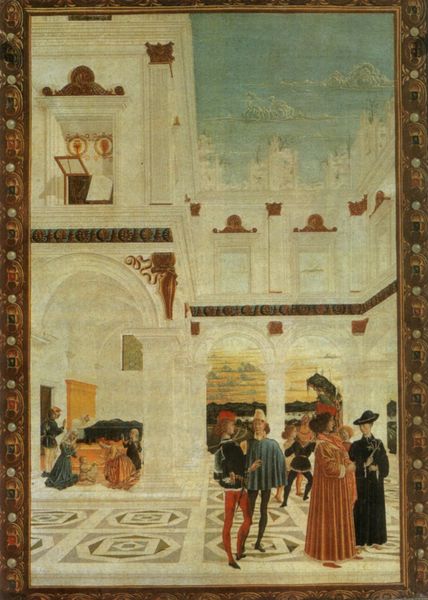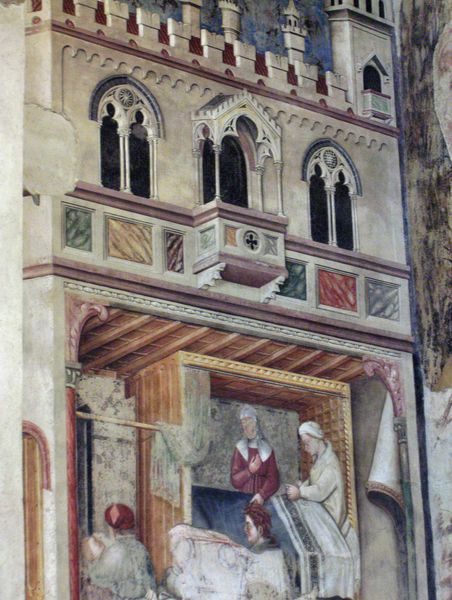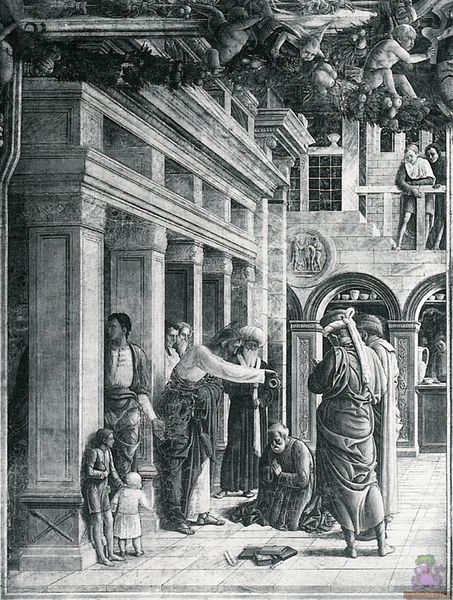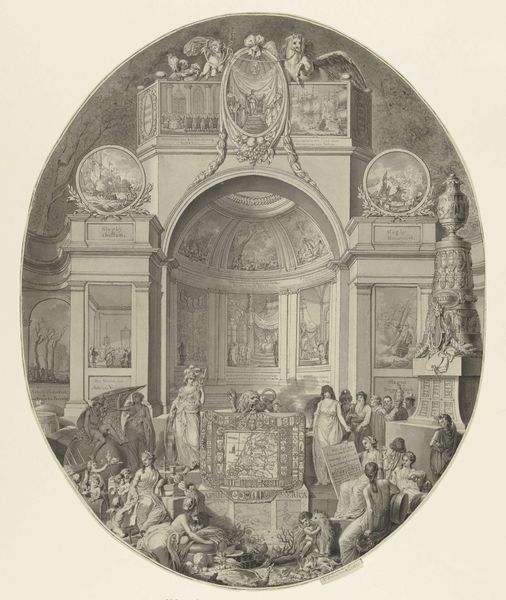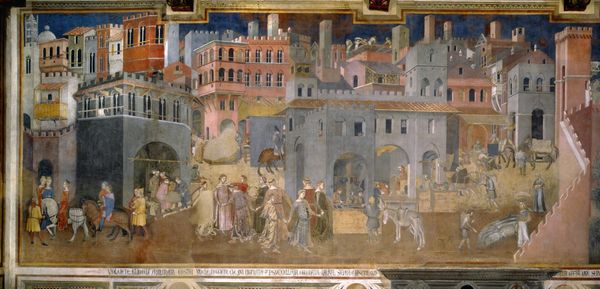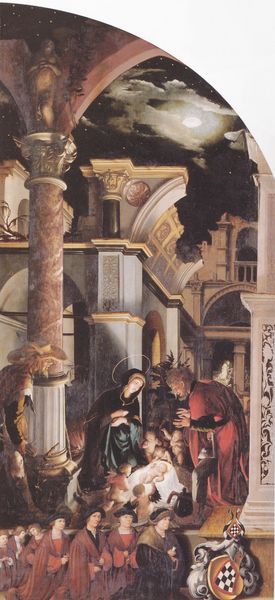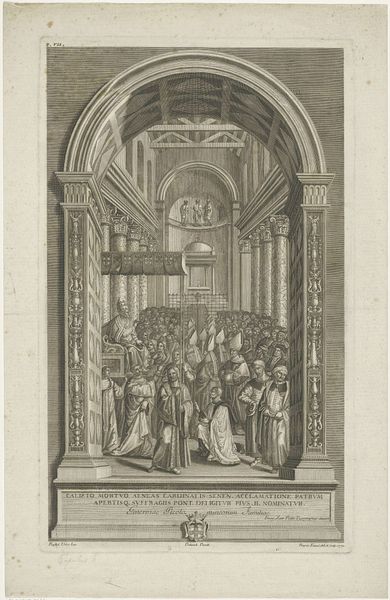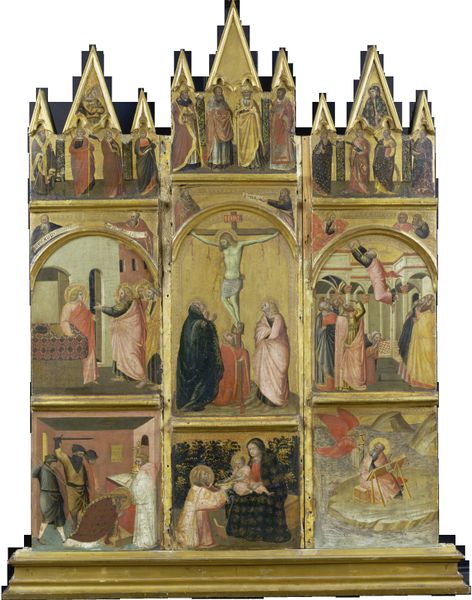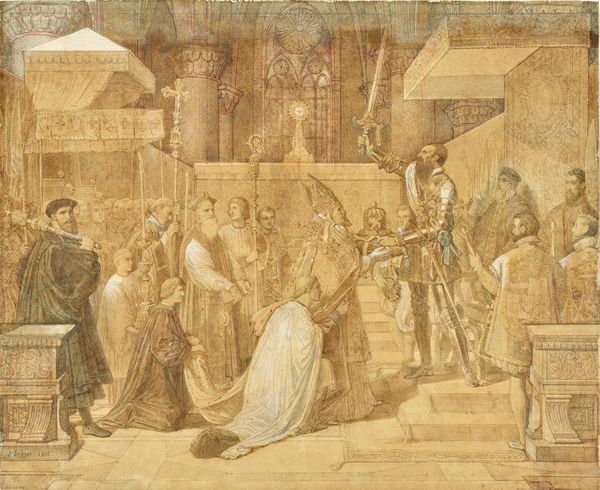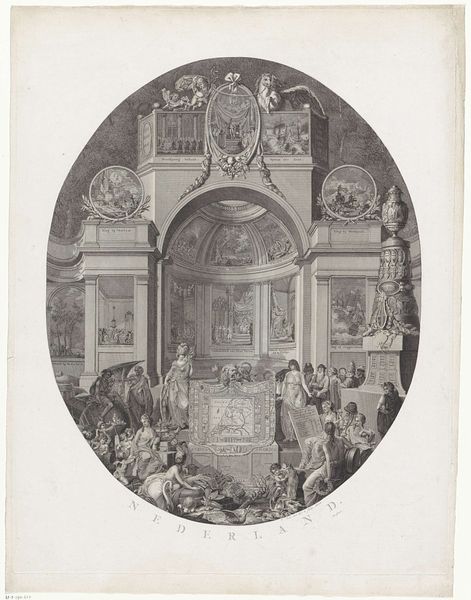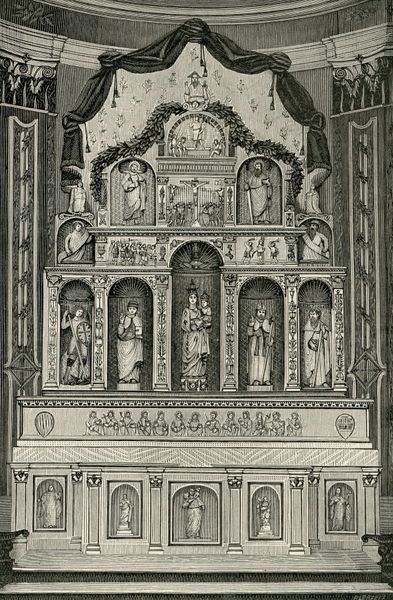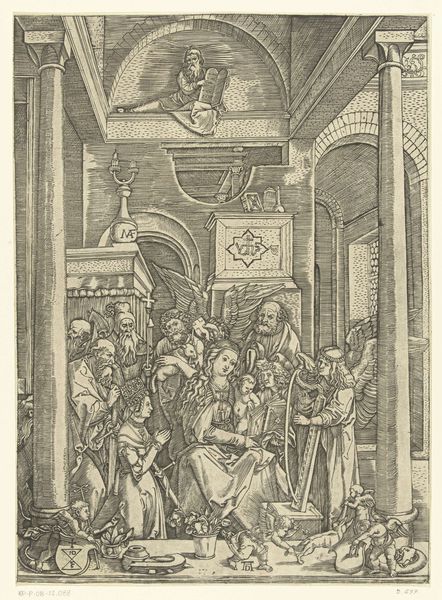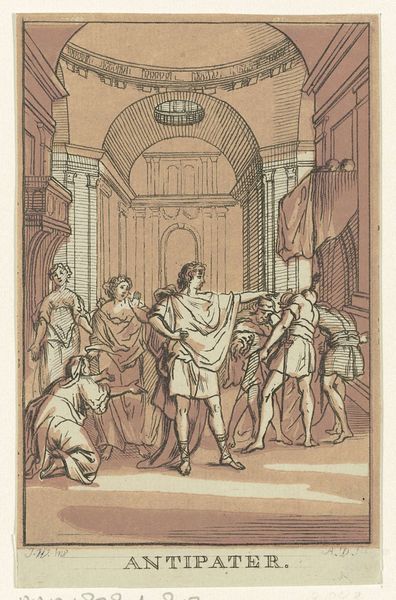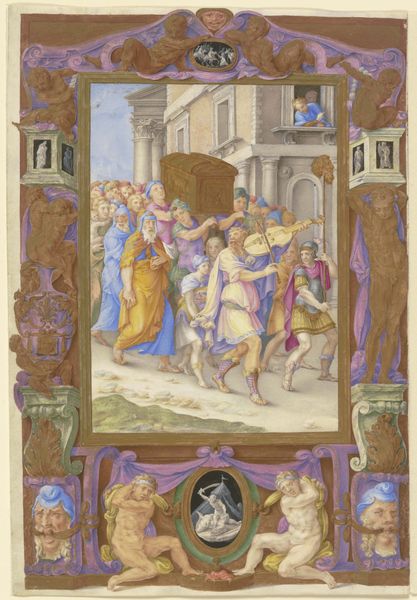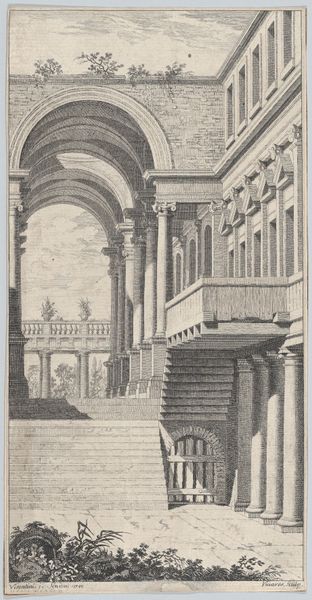
The Miracles of San Bernardino. The Healing of the blind and deaf Riccardo Micuzio 1473
0:00
0:00
pietroperugino
National Gallery of Umbria (Palazzo dei Priori), Perugia, Italy
painting, oil-paint, fresco
#
high-renaissance
#
narrative-art
#
painting
#
oil-paint
#
holy-places
#
figuration
#
fresco
#
oil painting
#
christianity
#
painting painterly
#
history-painting
#
italian-renaissance
#
watercolor
#
christ
Dimensions: 76 x 56.7 cm
Copyright: Public domain
Curator: This is Pietro Perugino's “The Miracles of San Bernardino. The Healing of the blind and deaf Riccardo Micuzio,” dating back to 1473. It's currently housed in the National Gallery of Umbria. Editor: The overwhelming flatness creates such a unique aesthetic. The composition feels almost like a stage set, incredibly deliberate and balanced. I am instantly intrigued by the construction. Curator: Precisely. Perugino uses linear perspective meticulously, creating depth that simultaneously draws you in and maintains a calculated distance. Consider the orthogonals converging, reinforcing the idealized space of the early Renaissance. The balanced use of light and shadow enhances the painting's clarity and legibility. Editor: It seems he favored processional displays with a high emphasis on materiality and visual representation. From the red garments, made by expensive pigment from Cennino Cennini's instructions, to gold-work embellishments; one can immediately think about the resources required to realize such image production. How does this wealth impact how its messages can reach the masses? Curator: Your focus on materiality is apt, especially when viewed alongside semiotic analysis. The materials denote prestige and status and are intricately linked to the symbolism conveyed within the piece. Gold signifies divinity; ultramarine represents holiness, elevating the events depicted from everyday occurrences to sacred narratives. Editor: I agree. But more importantly, who labored over preparing the pigments? How does the division of labor affect how it expresses its vision of religious miracles? It has shifted away from tempera but does embrace new oil paint as one can tell the artist blended it with egg-yolk to control his chroma levels. I see fresco in its completion. What influenced the choice of applying it to different medium like the underpainting? Curator: Ah, the dialogue between painting and craft! A point well-taken, the tension underscores a subtle dynamic within Perugino’s oeuvre. His composition and technical handling, demonstrate an active response to prevalent art historical modes while crafting devotional narrative through careful calculated methods. Editor: Ultimately, I feel the painting, while celebrating faith, speaks volumes about the society that commissioned and consumed such imagery. The economics and skill were integral in forging not just the painting, but in reinforcing religious belief within the political era. Curator: A poignant observation. Indeed, analyzing its structure and its material grounding reveals the complex interplay between artistic vision, societal context, and the very essence of High Renaissance ideals.
Comments
No comments
Be the first to comment and join the conversation on the ultimate creative platform.
